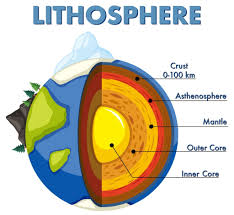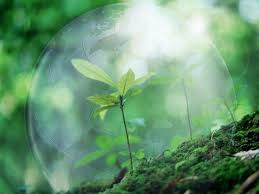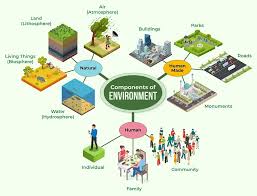The environment includes everything—both living and non-living—that exists naturally on Earth. This includes the air, water, land, plants, animals, and even microorganisms. All these elements interact to form a system that supports life.
In this article, the concept of the environment is explained along with its components, highlighting the natural and physical features that define different regions on Earth.
Natural vs. Built Environment
The natural environment refers to the areas not significantly altered by human activity. It includes forests, rivers, oceans, soil, air, and all organisms within these systems. These ecosystems operate without massive human interference.
In contrast, the built environment includes cities, farms, roads, and buildings that are heavily influenced by human development. Today, truly untouched natural environments are rare, and most landscapes show varying levels of human impact.
For instance, although the soil composition in an agricultural field might resemble that of a forest, its structure differs due to human activities such as plowing.
Definition of the Environment in Earth Sciences
Earth science recognizes that the environment is composed of distinct but interconnected spheres. These spheres represent the different components of the Earth system:
The Main Environmental Spheres
1. Lithosphere – the solid, rocky part of the Earth, including the crust and upper mantle.
2. Hydrosphere – all the water bodies including oceans, rivers, lakes, and groundwater.
3. Atmosphere – the layer of gases that surrounds the Earth.
4. Biosphere – all living organisms and their interactions with air, water, and land.
5. Cryosphere – the frozen water part of the Earth, such as glaciers and ice caps.
6. Pedosphere – the outermost layer of the Earth where soil forms and supports plant life.
These spheres are studied under earth sciences, which include geography, geology, geophysics, and geodesy. These disciplines work together to explain how Earth’s systems operate and influence life.
Read Also: How to Extract and Package Snail Slime (Snail filtrate) for Commercial Use
Geological Activity and the Lithosphere

The lithosphere is the Earth’s crust, made up of rocks formed mostly by the cooling of molten rock (magma). Beneath it lies the mantle, which is heated by the decay of radioactive materials.
This heating causes movement in the mantle, which drives plate tectonics. These slow movements are responsible for earthquakes, the formation of mountains, and volcanic eruptions. Volcanoes are mostly formed when parts of the Earth’s crust melt due to subduction or rising hot mantle material.
Read Also: The Health Benefits of Using Accent Seasoning on your Cooking
Water as a Major Environmental Component

Water covers a large part of the Earth and plays a critical role in sustaining life. It exists in different forms and regions:
1. Oceans
Oceans are vast bodies of saltwater that cover about 71% of the Earth’s surface. They form a single global body known as the World Ocean, though they are commonly divided into five main parts:
i. Pacific Ocean
ii. Atlantic Ocean
iii. Indian Ocean
iv. Southern Ocean
v. Arctic Ocean
Ocean water has a typical salinity of 35 parts per thousand (3.5%). Oceans play an essential role in regulating the Earth’s climate and supporting marine biodiversity.
2. Rivers
A river is a freshwater body that flows towards another river, a lake, or an ocean. Rivers are essential for agriculture, water supply, and habitat for various species. They form part of the hydrological cycle and are fed by rain, groundwater, snowmelt, and glaciers.
3. Streams
Streams are smaller than rivers and flow within defined channels. They play an important role in linking habitats and support biodiversity. Some common names for streams include creeks, brooks, and tributaries.
4. Lakes
Lakes are inland water bodies that are larger and deeper than ponds. They are usually formed in mountainous areas, glacial zones, or as part of a river’s flow. Over time, lakes can fill with sediment or overflow, leading to changes in their size or even disappearance.
5. Ponds
Ponds are smaller, still water bodies and may be natural or man-made. They are used for various purposes such as fish farming, water storage, and recreation. Unlike streams, ponds do not have noticeable flowing currents, and their water movement is minimal.
This article explained the concept and components of the environment, emphasizing the interaction of natural systems and their significance.
From the geological layers of the Earth to the vast oceans and rivers, each element plays a unique role in maintaining the balance of life.
Understanding these components helps in better managing natural resources, especially in agriculture and environmental conservation.
Do you have any questions, suggestions, or contributions? If so, please feel free to use the comment box below to share your thoughts. We also encourage you to kindly share this information with others who might benefit from it. Since we can’t reach everyone at once, we truly appreciate your help in spreading the word. Thank you so much for your support and for sharing!

